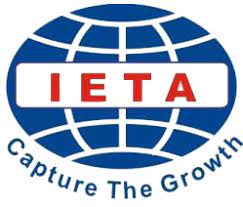DEVELOPING PROCESS GENRE - BASED APPROACH HANDOUT FOR TEACHING WRITING OF EXPOSITION HORTATORY TEXT FOR SENIOR HIGH SCHOOL STUDENTS
 ), Jufrizal Jufrizal(2), Hamzah Hamzah(3),
), Jufrizal Jufrizal(2), Hamzah Hamzah(3), (1) Universitas Negeri Padang
(2) Universitas Negeri Padang
(3) Universitas Negeri Padang
 Corresponding Author
Corresponding Author
Copyright (c) 2018 Lingua Didaktika: Jurnal Bahasa dan Pembelajaran Bahasa
DOI : https://doi.org/10.24036/ld.v7i2.10348
Full Text:
 Language : en
Language : en
Abstract
This article is a development research that aims to develop teaching-based writing materials in the process of producing a genre in the form of exposition hortatory. In this study also estimated the level of validity, practicality and effectiveness of teaching materials developed. This research method is done in four stages; definition, design, development and limited deployment; on the students of grade XI IPA 2 SMA Adabiah Padang. After the stages of dissemination is limited, measured product practicability and product effectiveness to the value of student writing. Development results show the validity of the product contained in the category can be used with the improvement with a value of 77.4. Practicality of the product is stated at the value of 88.77 and the effectiveness at the value of 80%. It can be concluded that the product can be used as teaching teaching material.
Keywords
References
Bachman, F. Lyle. 1990. Fundamental Consideration in Language Testing. New York: Oxford University Press.
Badger, R and White, G. 2000. A Process Genre Approach to Teaching Writing. ELT Journal, Volume 54, Issue 2: 153-160.
Belbase, Madhav Raj. 2010. The Process-Genre Approach: Some Ideas for Teaching Writing in Nepal. Nepalese ELT, Vol 1.
Boardman, Cynthia and Frydenberg, Jia. 2002. Writing to Communicative: Paragraphs and Essays 2nd Edition. Longman: Pearson Education, Inc.
Departement Pendidikan Nasional. 2008. Memilih Bahan Ajar. Jakarta : Depdiknas.
Ellington, Henry and Race, Phil. 1994. Producing Teaching Material 2nd Ed: A Handbook for Teacher and Trainer. London: Kogan Page Limited
Kim, Yanghee and Kim Jiyoung.2005. Teaching Korean University Writing Class: Balancing the Process and the Genre approach. Asian EFL Journal(on line), http://www.asian-efl-journal.com/june_05_yk&jk.php
Langan, John. 1997. College Writing Skills with Reading 4th ed. New York: McGraw-Hill.
Mulyasa, Enco. 2006. Kurikulum Tingkat Satuan Pendidikan. Bandung: Remaja Rosdakarya.
Riduwan. 2005. Belajar Mudah Penelitian Untuk Guru, Karyawan dan Peneliti Pemula. Bandung : Alphabeta.
Seaton, Andrew. 2007. Checklist of types and text types. Retrieved at http://www.andrewseaton.com.au/copyrite.htm, on January 2010.
Sugiyono, 2008. Metode Penelitian Kuantitatif, Kualitatif dan R&D. Jakarta : Alfhabeta
Soelistia, Umar. 2001. Pengembangan Bahan Ajar. Retrieved from http://pustaka.ut.ac.id/puslata/online.php?menu=bmpshort_detail2&ID=31 at Jan 5th, 2010.
Tomlinson, B. and Masuhara, H. 1998 Developing Language Course Material: RELC Portfolio Series 11. Singapore: RELC Publisher.
Yan, Guo. 2005. A Process Genre Model for Teaching Writing. English Teaching Forum Volume, 43; Number 3.
 Article Metrics
Article Metrics
 Abstract Views : 1138 times
Abstract Views : 1138 times
 PDF Downloaded : 276 times
PDF Downloaded : 276 times
Refbacks
- There are currently no refbacks.
Copyright (c) 2018 Lingua Didaktika: Jurnal Bahasa dan Pembelajaran Bahasa

This work is licensed under a Creative Commons Attribution-NonCommercial 4.0 International License.









